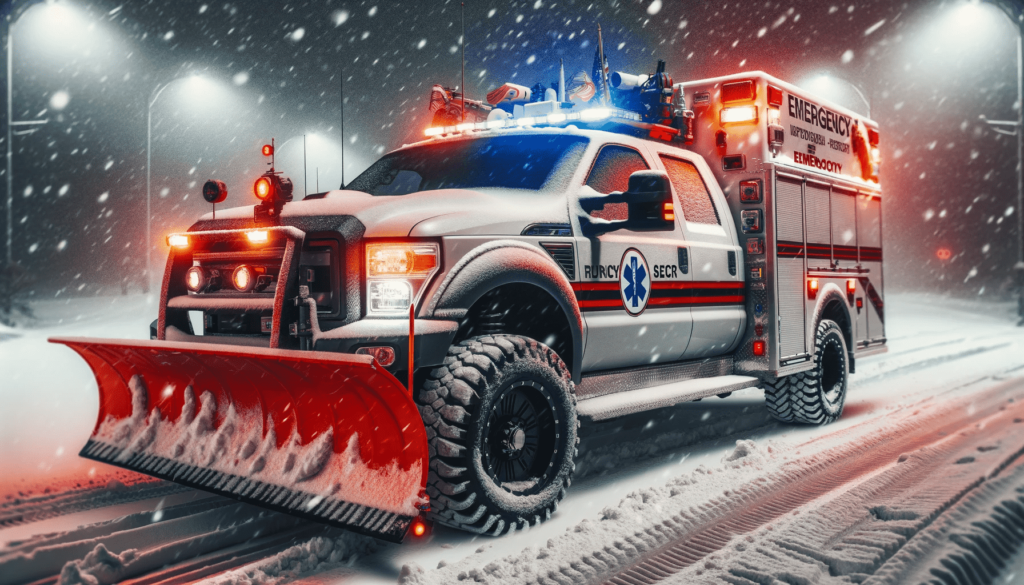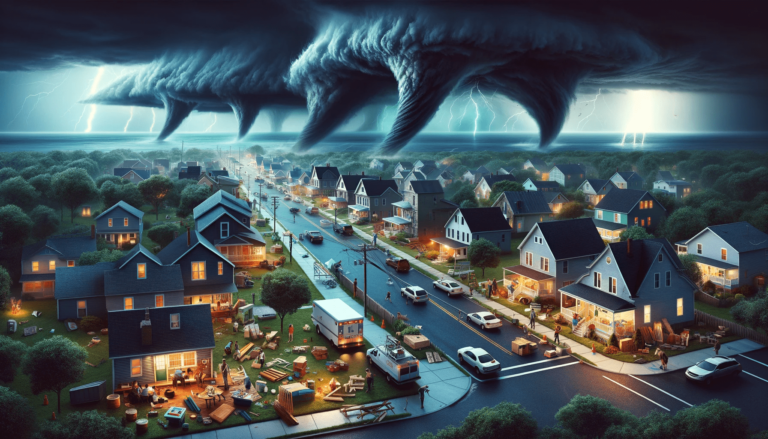Snow Squalls Forecasted: Preparing for Frigid Weather in the Tri-State Area
As winter tightens its grip on the Tri-State area, residents are bracing for a significant shift in weather patterns. Meteorologists have forecasted the imminent arrival of snow squalls, a phenomenon that brings rapid and intense snowfall combined with strong winds, dramatically reducing visibility and creating treacherous travel conditions. This sudden onset of severe weather is not only a reminder of winter’s unpredictability but also underscores the importance of being well-prepared and informed.
Understanding and preparing for these snow squalls is crucial for the safety and well-being of the Tri-State community. The nature of snow squalls – often brief yet intense – can catch even the most seasoned residents off guard. Such conditions can lead to hazardous driving scenarios, disruptions in daily routines, and potential emergencies. As we delve deeper into the specifics of what snow squalls entail, their impacts, and how best to prepare, it becomes clear that knowledge and readiness are key to navigating these challenging winter conditions safely. This article aims to provide comprehensive information and practical tips to help residents of the Tri-State area effectively prepare for and respond to the expected snow squalls.
Understanding Snow Squalls
Snow squalls are intense, short-lived bursts of heavy snowfall that can create significant visibility issues and quickly cover roads with snow. Unlike a typical snowstorm that might last for hours or even days, a snow squall is relatively brief, often lasting for less than an hour. However, what they lack in duration, they make up for in intensity. Snow squalls are often accompanied by strong, gusty winds, which can lead to sudden whiteout conditions—a phenomenon where visibility is severely reduced by snow and blowing snow.

The key difference between snow squalls and blizzards lies in their duration and scope. While blizzards are prolonged events with sustained winds and considerable snow accumulation, snow squalls are more localized and short-lived. Regular snowfall, on the other hand, is generally more predictable and less intense than snow squalls.
Snow squalls can have a significant impact on road conditions. The rapid accumulation of snow, combined with reduced visibility, can lead to dangerous driving conditions. Roads may quickly become slippery and treacherous, and the sudden nature of squalls can catch drivers off guard, increasing the risk of accidents.
Current Weather Patterns in the Tri-State Area
The Tri-State area is currently experiencing a notable shift in weather patterns, characterized by a sudden drop in temperature and the forecasted onset of snow squalls. This change can be attributed to a strong cold front sweeping across the region, bringing with it colder air and the potential for severe winter weather conditions.
Meteorologically, the formation of snow squalls is often linked to cold air masses colliding with warmer, moist air. As these air masses interact, the atmosphere becomes unstable, leading to the rapid development of snow squalls. The current weather scenario in the Tri-State area fits this pattern, with the contrasting air masses creating the perfect conditions for these unpredictable and intense snow events.
Historically, the Tri-State area has witnessed similar weather patterns, though the intensity and frequency of such events can vary from year to year. By comparing current conditions with those of previous years, meteorologists can offer more accurate predictions and help residents prepare adequately for what lies ahead. This year’s weather pattern, particularly with the arrival of snow squalls, is a reminder of the region’s susceptibility to rapid and extreme weather changes during the winter months.
Impact of Snow Squalls on Daily Life
The arrival of snow squalls in the Tri-State area can have a profound impact on daily life, particularly in terms of transportation. These brief but intense bursts of snow can lead to sudden road closures and significant delays in public transit. The reduced visibility and quick accumulation of snow make driving conditions hazardous, often resulting in a higher incidence of vehicular accidents. Highways and arterial roads can become treacherous within minutes, potentially stranding motorists and causing widespread traffic disruptions.
Schools and businesses may face operational challenges, including delayed openings, early closures, or even full-day cancellations. For parents and guardians, this can mean scrambling for last-minute childcare or adjusting work schedules abruptly. Snow squalls also affect pedestrian mobility; sidewalks and pathways can quickly become slippery, increasing the risk of falls and injuries.
In these conditions, it’s crucial to stay informed about the latest weather updates and travel advisories. Residents are advised to avoid unnecessary travel during snow squalls. If travel is unavoidable, drivers should exercise extreme caution, reduce speed, and maintain a safe distance from other vehicles. It’s also advisable to keep headlights on and use windshield wipers to improve visibility.

Preparation and Safety Tips
Preparing for snow squalls involves several key steps to ensure safety and minimize disruptions. At home, it’s important to have an emergency kit ready, including items like flashlights, batteries, blankets, non-perishable food, and water. Ensure that heating systems are functioning properly and that pipes are insulated to prevent freezing.
Vehicle safety is paramount during snow squalls. Equipping cars with winter tires provides better traction on snowy and icy roads. It’s also wise to keep an emergency kit in the vehicle, including a snow shovel, ice scraper, jumper cables, and a first-aid kit. Always ensure your car’s gas tank is at least half full to avoid fuel line freeze-ups.
Pedestrians should dress in layers to stay warm, with a focus on waterproof and insulated clothing. Wearing shoes with good traction can significantly reduce the risk of slips and falls on icy surfaces. Being vigilant and cautious when walking outdoors is essential during these harsh weather conditions.
Emergency Response and Resources
In response to the anticipated snow squalls, emergency services in the Tri-State area are on high alert and fully prepared to tackle any arising challenges. Local authorities have reinforced their snow and ice removal teams and are ready to deploy additional personnel and equipment as needed. Hospitals and emergency responders are also on standby to provide immediate assistance in case of accidents or health emergencies caused by severe weather.
Residents are encouraged to stay updated on weather advisories through reliable sources such as the National Weather Service or local news channels. Essential resources include local hotlines for emergency services, weather updates, and information on road closures. Community support systems, such as neighborhood help groups or local shelters, play a crucial role in assisting those in need.
Community members need to look out for each other, especially the elderly and vulnerable. Checking on neighbors, offering help with grocery shopping, or clearing snow can make a significant difference in ensuring everyone’s safety and well-being during snow squalls.
Long-term Weather Forecast and Climate Considerations
The long-term weather forecast for the Tri-State area indicates a trend towards colder temperatures and more frequent winter weather events, including snow squalls. These patterns align with broader climate trends that suggest increasing variability in weather conditions, potentially leading to harsher winters.

Experts in meteorology and climate science believe that these trends could be indicative of larger climate changes. Fluctuations in global temperatures may contribute to more pronounced and erratic weather patterns, including the possibility of more severe and frequent snow squalls in the future. This underscores the need for continued research and adaptation strategies to prepare for potentially evolving winter weather scenarios in the Tri-State area.
Conclusion
As the Tri-State area braces for the upcoming snow squalls, the key takeaways are clear: staying informed, being prepared, and prioritizing safety is essential. These weather events, though brief, can have a significant impact on daily life, transportation, and safety. By following the recommended precautions and staying connected to community support systems, residents can navigate these challenging conditions more effectively. The spirit of community solidarity is crucial during such times, ensuring that everyone, especially the most vulnerable, can weather the storm safely.







